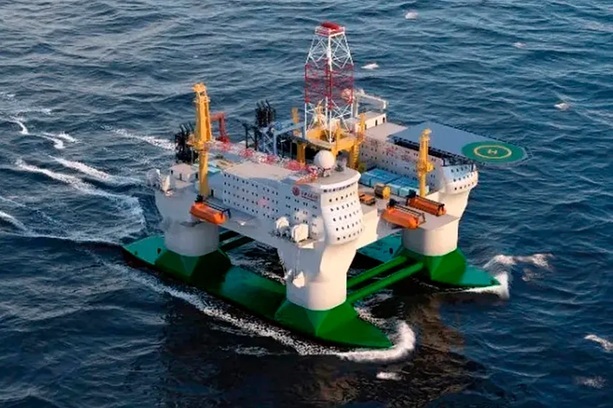In the South China Sea, Chinese engineers are building a mobile mega-infrastructure that could redefine not only oceanic science but also the strategic balance in the disputed waters of the Indo-Pacific: a floating artificial island, semi-submersible, self-sufficient, designed to survive extreme typhoons... and nuclear explosions.
Its mere existence, analysts argue, heralds a qualitative leap in maritime competition. What Beijing does not mention is that this new project completes, even more alarmingly for Asian neighbors, the network of militarized artificial islands that the Asian superpower has been building in the region for years.
The construction of the new floating island was included in the upcoming five-year plan (the strategic roadmap describing economic and social development objectives for a five-year period) as a nationally significant scientific infrastructure. With a displacement close to that of an aircraft carrier -78,000 tons-, it will consist of a platform measuring 138 meters long and 85 meters wide, with its main deck located 45 meters above sea level.
It is expected to enter service in 2028 and will have exceptional operational capacity: 238 crew members who can stay 120 days without the need for replenishment; resistance to waves up to 10 meters high and the most violent typhoons. The development originated from Shanghai Jiao Tong University, one of the country's most prestigious technical centers, where researchers presented the project as the world's first mobile and self-sufficient artificial island.
A peer-reviewed article published in the China Naval Research Journal this month revealed more "unique" details about the new floating island, which will have a sandwich panel system designed to convert catastrophic shockwaves - including nuclear explosions - into gradual compressions, preserving the critical rooms of the platform. The obvious question arising from these notes is: why does a supposed scientific facility need to withstand a nuclear impact?
The team of scientists involved in the project, led by Professor Yang Deqing, state that it is about ensuring the survival of command, energy, and navigation control centers in the worst-case scenario. "This important deep-sea scientific facility is designed to operate long-term in any weather condition," they explained in the article.
The officials mention a "paradigm shift" capable of offering research conditions that no fixed laboratory or conventional ship can replicate, as continuous observation of deep waters, underwater vehicle tests, ocean mining technology trials, and climate and biological research can be conducted. But its extreme autonomy and unlimited mobility could also serve a more military purpose as an advanced surveillance outpost. These high-tonnage mobile platforms are not yet classified within current legal frameworks, and some fear that, under the pretext of building floating scientific facilities, the trend of constructing mobile and self-sufficient military bases may emerge.
In the South China Sea, Beijing has been building small fixed artificial islands for over a decade; a military expansion in disputed waters with Southeast Asian neighbors (Chinese authorities defend these constructions as civilian infrastructures that assist fishermen and improve navigation). In 2016, an international tribunal ruled that China had no right to claim ownership of the sea and found that it had violated international law by building these islands on reefs closer to the coasts of other countries such as the Philippines, Vietnam, or Malaysia.
This is what they did in the Spratly Islands, located between the Philippines and Vietnam, which have approximately 100 reefs and islets, surrounded by fishing banks and natural gas and oil fields. "These islands have military spaces housing missile systems, radars, runways capable of handling heavy aircraft, fuel storage facilities to support military operations, and naval facilities," stated a research published by the Asia Maritime Transparency Initiative group.
A description that was refuted in 2023 by retired Admiral John C. Aquilino, the top U.S. military commander in the region until last year. "Over the past 20 years, we have witnessed the greatest military concentration since World War II by China," Aquilino stated.
These artificial islands, critics say, operate as mini naval bases: they have 3,000-meter runways, sufficient for H-6K bombers with nuclear capability or cruise missiles, heavy transport aircraft Y-20, J-11B/J-16 fighters, surveillance or attack drones. The complexes built in these locations would include satellite communication antennas, optical sensors, and electronic warfare facilities (communication interference, GPS signal disruption). Tools that allow immediate knowledge of which ships and aircraft are circulating in the region.
For the construction of these islands, dredgers, barges, and a fleet of vessels are sent to extract sediment (sand and gravel) from the seabed or nearby sandbanks. This material is pumped and deposited onto the reef flat, often within perimeter containment walls built with rocks and piles. Over time, the fill material compacts, is covered with protective layers, and docks, storage facilities, hangars, and runways are installed. All of this has also led to criticism for the environmental impact in terms of the destruction of coral systems that serve as fish nurseries.
